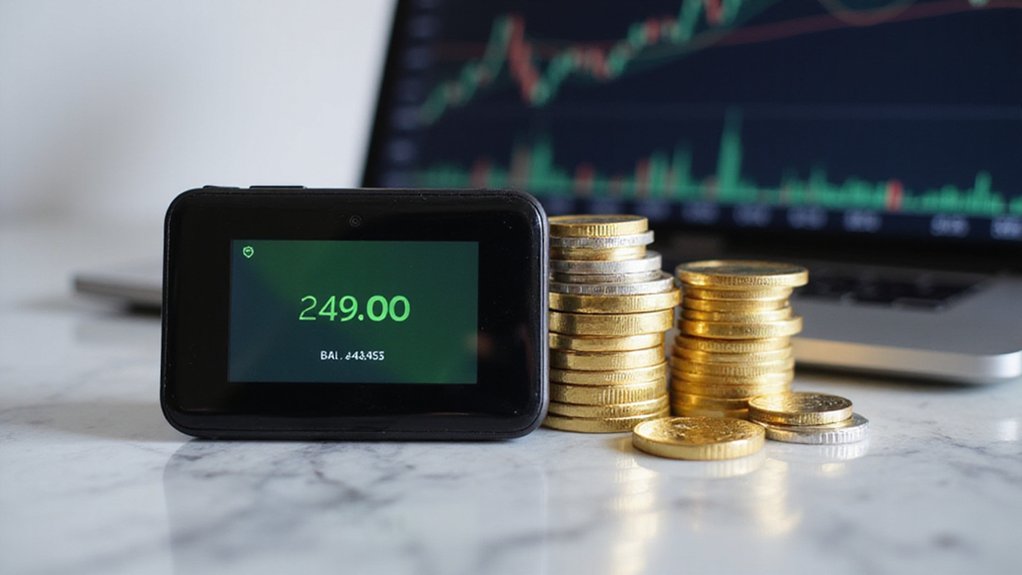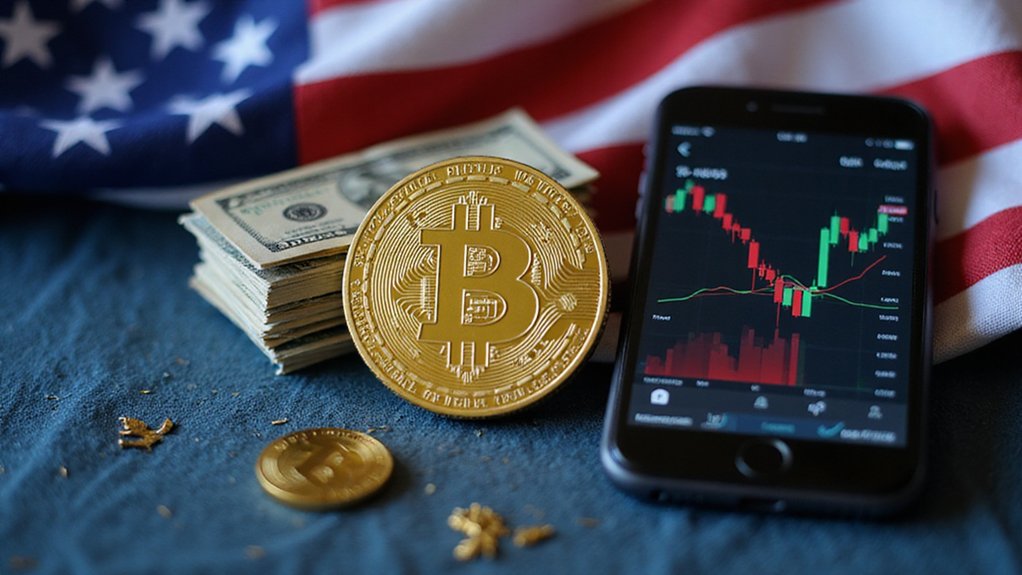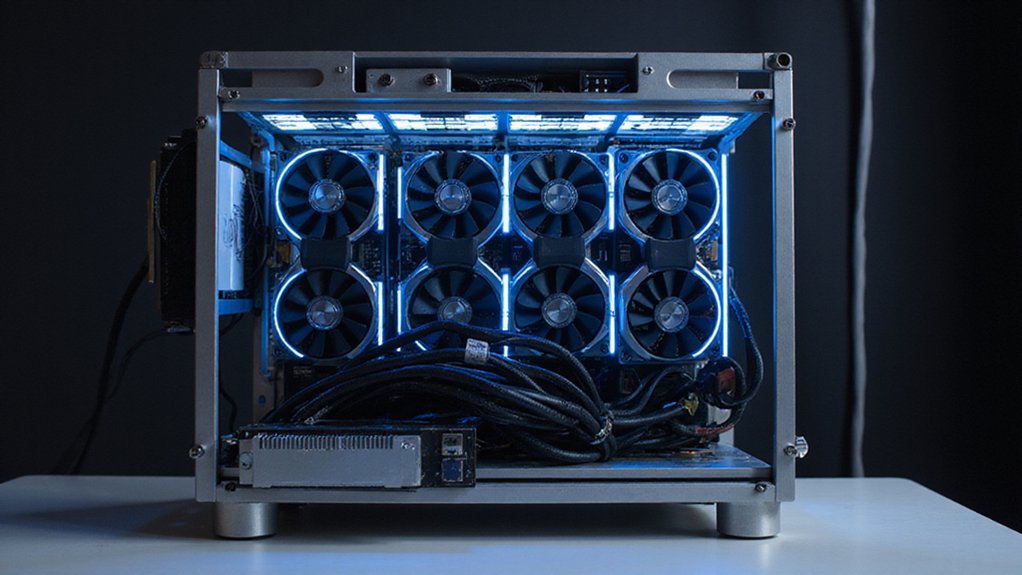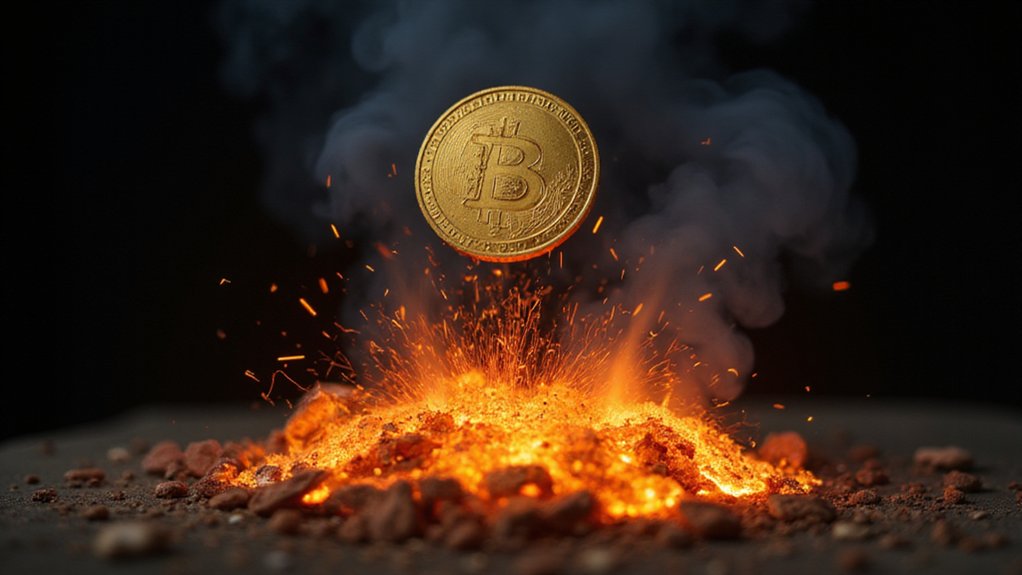Stablecoins, despite their theoretical appeal as volatility safe harbors, fall dramatically short of being investment safety backbones. BIS research confirms every major stablecoin has broken its peg at least once, with high-profile failures like Terra-Luna’s algorithmic collapse and Tether’s regulatory fines for reserve misrepresentations. Their limited transparency, lack of FDIC protection, and high redemption thresholds create substantial risks, particularly during market stress. The “stable” in stablecoin remains more marketing aspiration than financial guarantee.
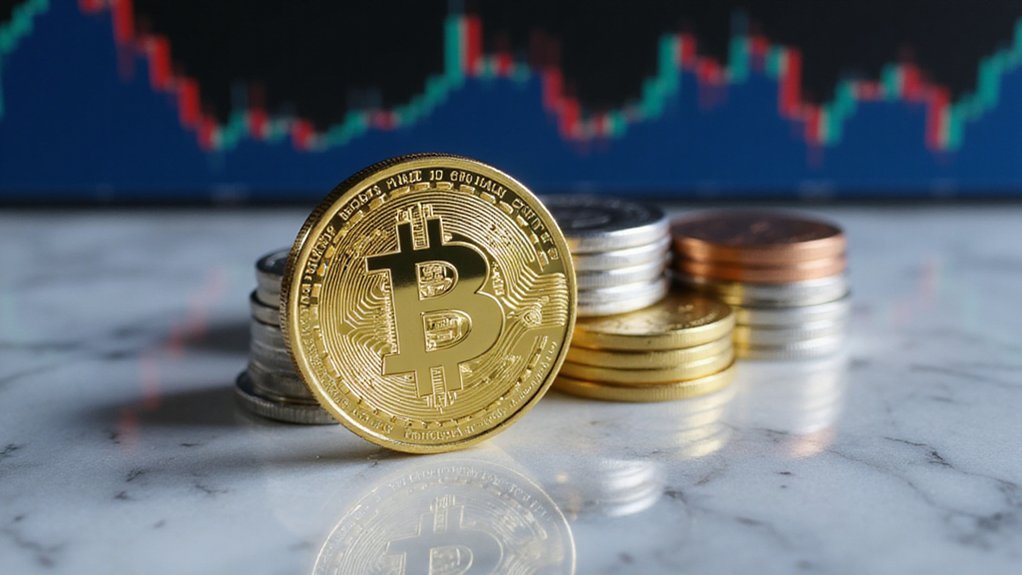
The paradox of “stability” in cryptocurrency markets presents itself most acutely in the form of stablecoins—digital assets ostensibly designed as safe harbors in the notoriously volatile crypto seas.
These digital units of value, pegged to official currencies through reserves or algorithmic mechanisms, purportedly offer investors sanctuary from the wild price swings characteristic of Bitcoin and its volatile brethren.
The theoretical appeal is undeniable: maintain cryptocurrency’s borderless efficiency while importing fiat currency’s relative stability.
Yet reality tells a more sobering tale.
Despite crypto’s grand promises, when we examine the evidence, we find stability remains perpetually out of reach.
Every major stablecoin—all sixty studied by the Bank for International Settlements—has broken its peg at least once, challenging the fundamental premise of their existence.
Tether, the market leader, has paid multiple regulatory fines for misleading statements about its reserves, while Circle’s USDC faced existential questions when $3.3 billion of its backing became temporarily inaccessible during Silicon Valley Bank’s collapse.
The spectacular implosion of Terra-Luna in 2023 demonstrated how quickly algorithmic stabilization mechanisms can spiral into catastrophic failure.
The transparency gap compounds these vulnerabilities.
Most stablecoins rely on attestations rather than thorough audits, leaving investors to simply trust issuers’ claims about reserve quality. Their limited redemption possibilities often include high minimum thresholds, making them practically unredeemable for average retail users.
Unlike bank deposits, these holdings lack FDIC protection, creating pronounced redemption risks during market stress—precisely when stability matters most.
This regulatory vacuum has prompted increasing scrutiny from the SEC and global financial authorities, who recognize the growing contagion channels between crypto assets and traditional finance.
Despite these deficiencies, stablecoins remain the critical infrastructure for cryptocurrency markets, serving as primary trading pairs and collateral within decentralized finance protocols.
Their growing adoption for cross-border payments and increasing institutional exposure suggests their significance will only grow.
Some institutional-focused stablecoins like USD1 are attempting to address these concerns through regular audits and transparent reserve management backed by government treasuries and cash equivalents.
Recent research by the BIS demonstrates that stablecoins consistently fail as havens during periods of significant market stress, contrary to their marketed purpose.
The question remains whether emerging regulatory frameworks or competition from central bank digital currencies will address fundamental flaws before the next crisis reveals them catastrophically.
Until then, the “stable” in stablecoin remains more aspiration than guarantee—a financial oxymoron that reveals crypto’s struggle to reconcile innovation with trust.
Frequently Asked Questions
How Do Stablecoin Issuers Maintain Their Pegged Value?
Stablecoin issuers employ diverse mechanisms to maintain their pegged value.
Asset-backed varieties hold reserves of fiat currencies or commodities—subject to regular audits (at least theoretically)—while algorithmic alternatives implement smart contracts that dynamically adjust supply based on market conditions.
Both models leverage market forces, where arbitrage opportunities incentivize traders to correct price deviations.
Regulatory compliance, transparency of reserves, and effective governance structures further bolster stability—though none provide ironclad protection against black swan events.
What Regulatory Challenges Do Stablecoins Currently Face?
Stablecoins face a regulatory quagmire of inconsistent global classifications, straddling securities, commodities, and currencies simultaneously.
Jurisdictional arbitrage flourishes while legislators dither—the EU implements MiCA, the UK frets about financial crime, and the US debates competing bills with glaring offshore loopholes.
Reserve management standards remain nebulous, with minimal standardized auditing protocols.
Meanwhile, compliance costs mount exponentially, redemption guarantees lack teeth, and the thorny question of insolvency proceedings remains curiously unaddressed.
Can Stablecoins Fail Despite Their Stability Mechanisms?
Despite their nominal claims to stability, stablecoins can—and spectacularly have—failed when their mechanisms encounter market stress.
TerraUSD’s $42 billion collapse exemplifies how algorithmic dependencies, volatile collateral, and overleveraged yield models can trigger catastrophic death spirals.
Even asset-backed models aren’t immune; liquidity mismatches during panic events overwhelm arbitrage mechanisms.
History demonstrates that circular risk designs (BitUSD, IRON) invariably buckle under pressure, while regulatory blind spots continue enabling high-risk models to proliferate unchecked.
How Do Algorithmic Stablecoins Differ From Collateralized Ones?
Algorithmic stablecoins differ from collateralized ones in their fundamental stabilization approach.
While collateralized versions maintain their peg through tangible reserves (fiat, crypto, or commodities) typically at over-collateralization ratios, algorithmic stablecoins rely on coded protocols that automatically execute mint/burn cycles based on market dynamics.
This distinction creates stark risk profiles—collateralized coins face counterparty and reserve devaluation risks, while algorithmic variants remain vulnerable to confidence-driven death spirals (as dramatically demonstrated by TerraUSD’s collapse).
What Transaction Fees Are Typically Associated With Stablecoin Transfers?
Stablecoin transfer fees vary dramatically across blockchains, with Ethereum commanding a premium ($0.50+) while alternatives like Solana or Stellar offer near-negligible costs (fractions of a penny).
Network congestion can send these fees soaring—a reality that has driven migration to Layer-2 solutions and alternative chains.
Additional costs emerge when crossing the crypto-fiat divide or bridging between blockchains, where exchanges inevitably extract their pound of flesh beyond base network fees.
